Research on Evaluation Index System of Chinese City Safety Resilience Based on Delphi Method and Cloud Model
Abstract
:1. Introduction
2. Establishment of Evaluation System Framework of City Safety Resilience
2.1. City Safety Resilience
2.2. Characterization Model of City Safety Resilience
2.3. Model Construction
2.3.1. Predisaster Prevention ()
2.3.2. Disaster-Bearing Carrier ()
2.3.3. Emergencies ()
2.3.4. Emergency Management ()
3. Methodology
3.1. Delphi Method
- (1)
- The information between experts is not transparent, so as to avoid authority in the industry influencing the judgment of other experts;
- (2)
- Experts are allowed to change their opinions after each round is completed;
- (3)
- The results of each round should be anonymously fed back to experts to ensure in-depth discussion among them;
- (4)
- The statistical analysis of the final feedback should take into account the feedback from each expert, and each statistical result should be mentioned, so as to avoid the shortcoming that the expert meeting method only reflects the views of the majority.
3.2. Cloud Model Method
- (1)
- Sample mean is calculated according to sample . The absolute central moment of first-order sample is , and the sample variance is .
- (2)
- The expected value _ is obtained according to step 1.
- (3)
- The entropy is calculated according to step 2.
- (4)
- The hyper entropy is calculated according to steps 1 and 3.
4. Establishment of City Safety Resilience Assessment Model
4.1. Cloud Model Fitting
4.2. Model Fitting Results
5. Result Analysis and Discussion
5.1. Weight Analysis and Discussion
5.2. Application Analysis and Discussion
- : City safety toughness evaluation score, which is a percentage system;
- : index weight;
- : The score result of percentage system for each index.
6. Conclusions
Author Contributions
Funding
Conflicts of Interest
References and Notes
- Talukder, S.; Capon, A.; Nath, D.; Kolb, A.; Jahan, S.; Boufford, J. Urban health in the post-2015 agenda. Lancet 2015, 385, 769. [Google Scholar] [CrossRef]
- Bouwer, L.M. Have disaster losses increased due to anthropogenic climate change? Bull. Am. Meteorol. Soc. 2011, 92, 39–46. [Google Scholar] [CrossRef]
- Branscomb, L.M. Sustainable cities: Safety and security. Technol. Soc. 2006, 28, 225–234. [Google Scholar] [CrossRef]
- Jha, A.K.; Miner, T.W.; Stanton-Geddes, Z. Building Urban Resilience: Principles, Tools, and Practice; World Bank Publications: Washington, DC, USA, 2013. [Google Scholar]
- Comfort, L.K. Shared Risk: Complex Systems in Seismic Response; Elsevier: Oxford, UK, 1999. [Google Scholar]
- Twigg, J. Characteristics of a Disaster-Resilient Community; Benfield Hazard Research Center: London, UK, 2007. [Google Scholar]
- Cimellaro, G.P.; Asce, A.M.; Renschler, C.; Reinhorn, A.M.; Asce, F.; Arendt, L. PEOPLES: A framework for evaluating resilience introduction and definition of resilience. J. Struct. Eng. 2016, 10, 60–63. [Google Scholar]
- Rockefeller Foundation, ARUP. City Resilience Framework. Available online: http://publications.arup.com//Publications/C/City_Resilience_Framework.aspx (accessed on 9 October 2019).
- Liu, J.Y.; Zeng, Z.P. Construction and Empirical Study of Flexible City Evaluation Index System; E-Government: Aix-en-Provence, France, 2014; pp. 82–88.
- Guo, X.D.; Su, J.Y.; Wang, Z.T. Urban Safety and Disaster Prevention under The Perspective of Resilience Theory. Shanghai Urban Plan. 2016, 71, 41–44. [Google Scholar]
- Huang, H.; Li, R.Q.; Fan, W.C.; Shan, C.C. Analysis on characteristics of safety resilient city and enlightenments for safe development of Xiongan New Area. J. Saf. Sci. Technol. 2018, 14, 5–11. [Google Scholar]
- Desouza, K.C.; Flanery, T.H. Designing planning, and managing resilient cities: A conceptual framework. Cities 2013, 35, 89–99. [Google Scholar] [CrossRef]
- Meerow, S.; Newell, J.P.; Stults, M. Defining urban resilience: A review. Landsc. Urban Plan. 2016, 147, 38–49. [Google Scholar] [CrossRef]
- Xu, H.; Xue, B. Key indicators for the resilience of complex urban public spaces. J. Build. Eng. 2017, 12, 306–312. [Google Scholar] [CrossRef]
- Yuan, H.Y.; Su, G.F.; Fu, M. Study and application of architecture method and technology of urban safety space. China Saf. Sci. J. 2018, 1, 185–190. [Google Scholar]
- Law of the China on Emergency Response. Central Government Portal. Available online: http://www.gov.cn (accessed on 30 August 2007).
- The State Council promulgated the General Emergency Plan for Public Emergencies. People’s Daily. Available online: http://politics.people.com.cn/GB/1026/4008411.html (accessed on 9 January 2006).
- The Central Committee of the Communist Party of China, the State Council. The Opinions of the State Council of the Central Committee of the Communist Party of China on Promoting the Reform of the System and Mechanism of Disaster Prevention; Mitigation and Relief; The Central Committee of the Communist Party of China: Beijing, China, 2016. [Google Scholar]
- Regulations on Emergency Response to Production Safety Accidents. (Decree No. 708 of the State Council)
- United Nations. Hyogo Framework for Action 2005–2015: Improving the Resilience of Nations and Communities to Disasters; United Nations Office for Disaster Risk Reduction (UNISDR): Geneva, Switzerland, 2005. [Google Scholar]
- Fan, Y.D. Future Challenges of Disaster Risk Management in China: Interpretation of Sendai Framework for Disaster Risk Reduction, 2015–2030; China Disaster Reduction: Hunan, China, 2015; pp. 18–21. [Google Scholar]
- UN-Habitat Fukuoka Office. Manual on Strategic Performance Indicators for Urban Development in China. Available online: www.cin.gov.cn/Habitat (accessed on 11 October 2019).
- UN-Habitat: United Nations Human Settlements Programme. State of the World’s Cities 2012/13: Prosperity of Cities; UN-HABITAT: Nairobi, Kenya, 2012. [Google Scholar]
- Dynes, R.R.; Drabek, T.E. The Structure of Disaster Research: Its Policy and Disciplinary Implications; University of Delaware Disaster Research Center: Delaware, DE, USA, 1994; p. 165. [Google Scholar]
- Sutanta, H.; Rajanifard, A.; Bishop, I.D. Integrating spatial planning and disaster risk reduction at the local level in the context of spatially enabled government. In Proceedings of the GSDI 12 World Conference: Realising Spatially Enabled Societies, Singapore, 19–20 October 2010. [Google Scholar]
- General Office of the Standing Committee of the National People’s Congress. Law of the China on Emergency Response. Politi. Newsp. People’s Gov. Yanan City 2007, 10, 44–48. [Google Scholar]
- Feng, J.H. Introduction to Enterprise Management; Chemical Industry Publishing House: Beijing, China, 2006. [Google Scholar]
- Wang, S.G.; Sun, Q.B.; Zhang, G.W.; Yang, F.C. Uncertain QoS-aware skyline service selection based on cloud model. J. Softw. 2012, 23, 1397–1412. [Google Scholar] [CrossRef]
- Xu, C.L.; Wang, G.Y.; Zhang, Q.H. A new multi-step backward cloud transformation algorithm based on normal cloud model. Fundam. Inform. 2014, 133, 55–85. [Google Scholar]
- Li, Y.D.; Meng, H.J.; Shi, X.M. Membership clouds and membership cloud generators. Comput. Res. Dev. 1995, 6, 1–20. [Google Scholar]
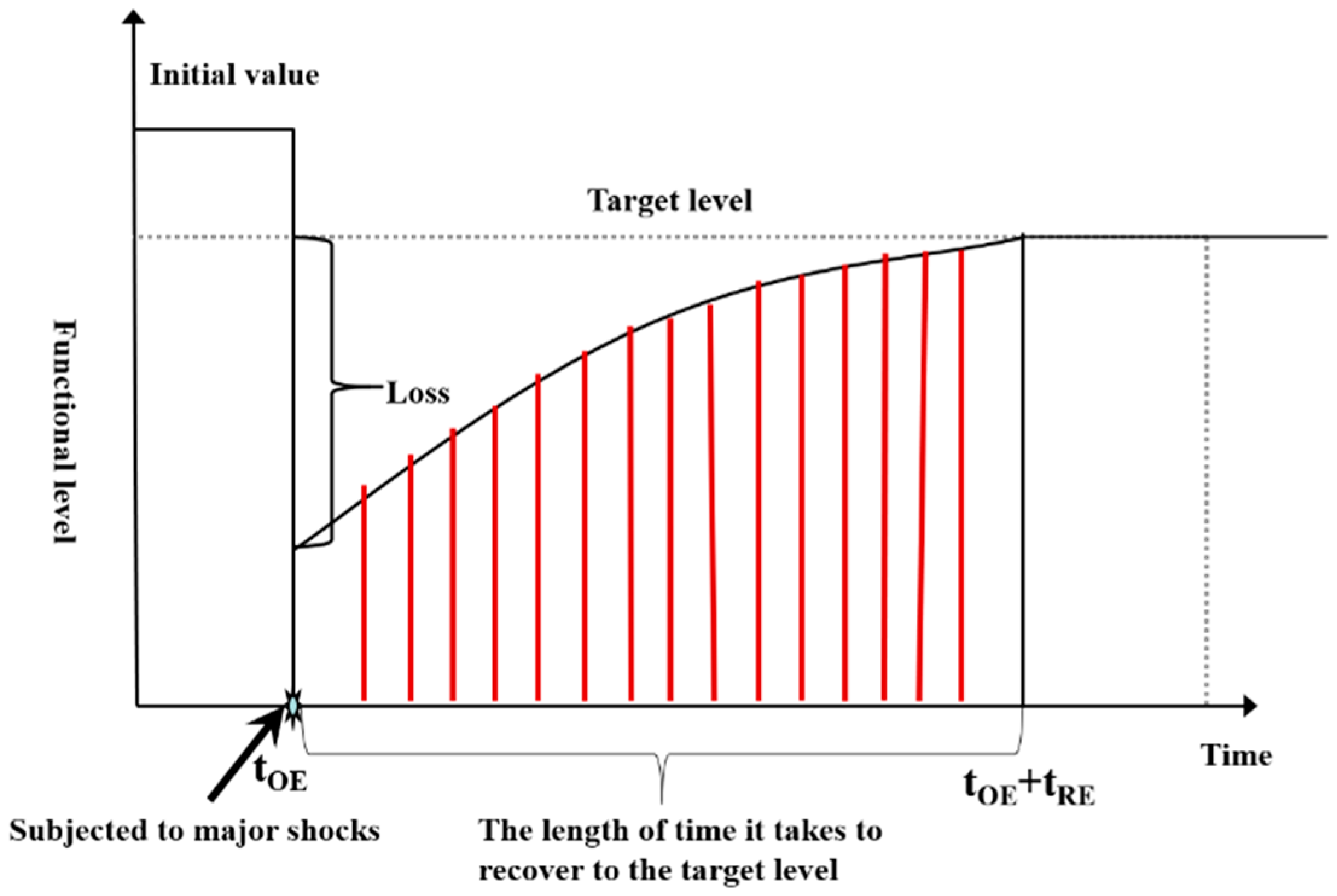
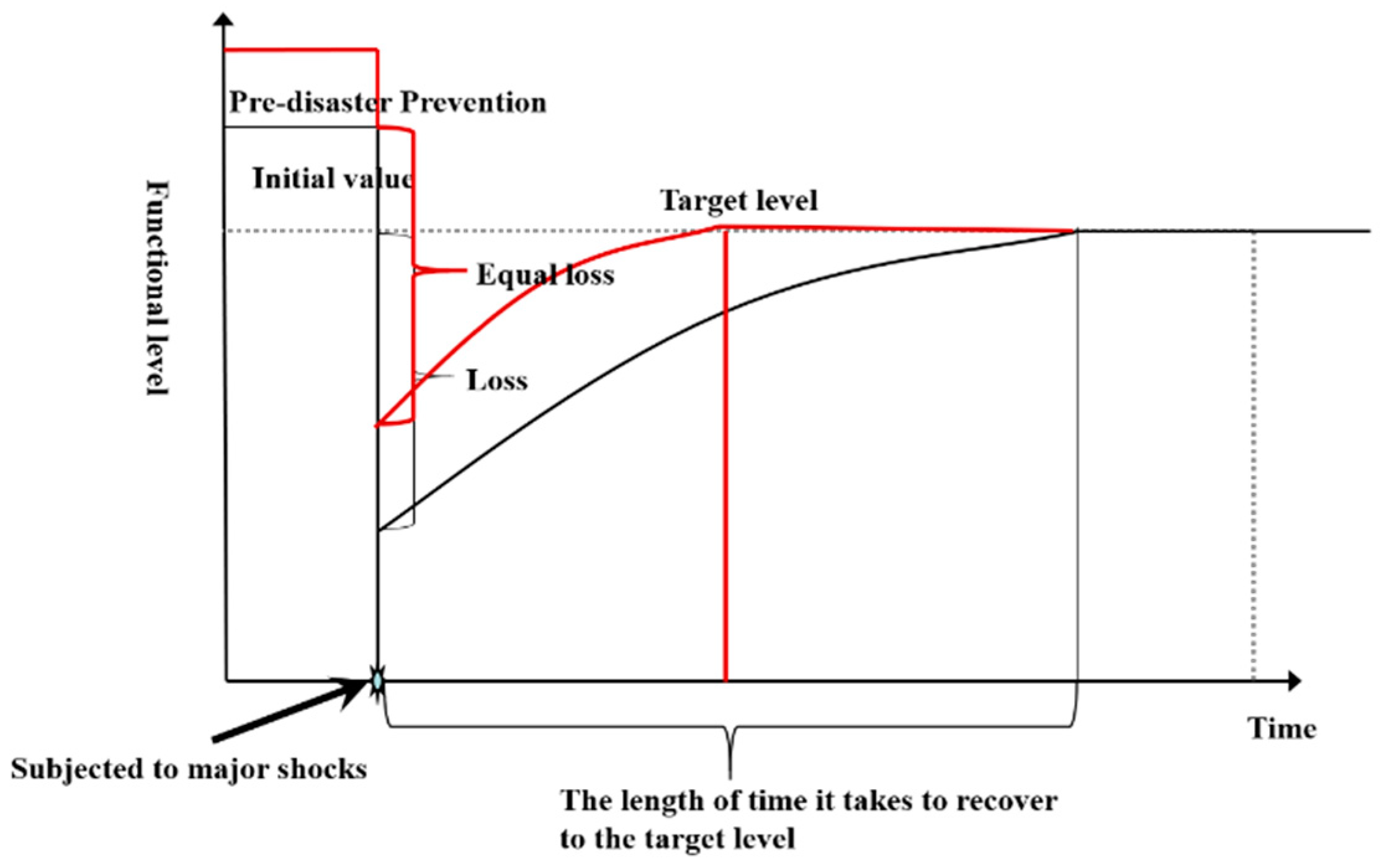
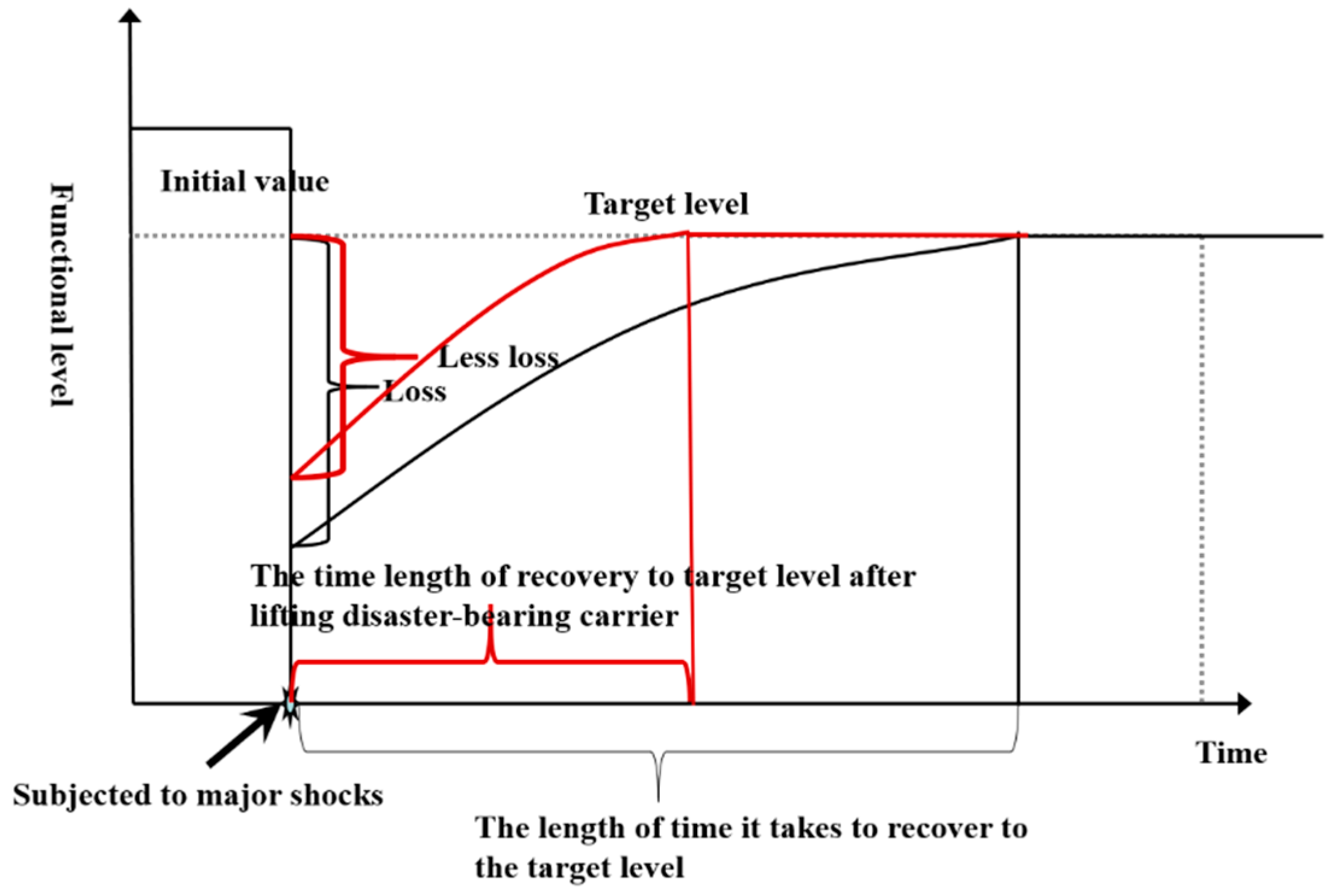

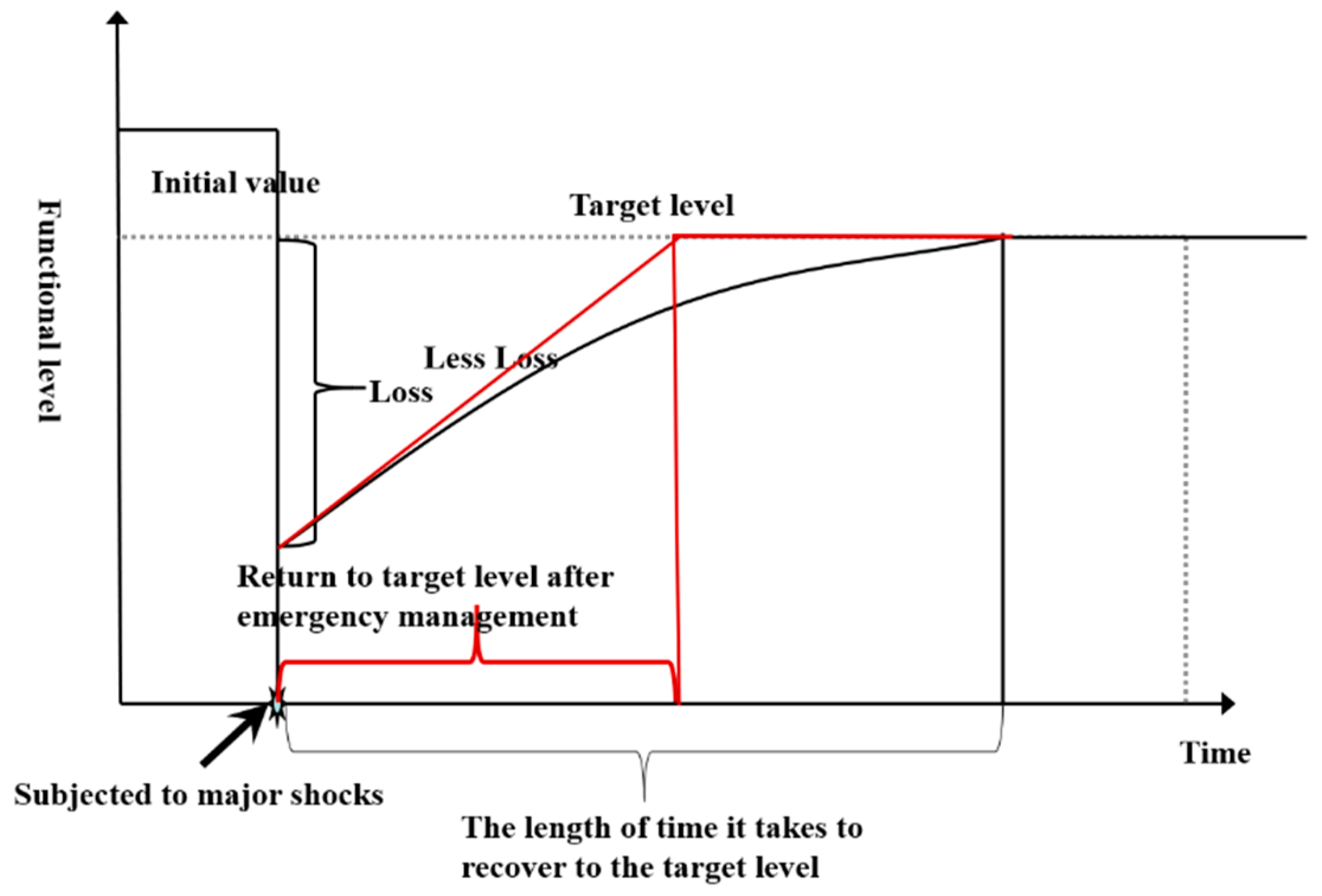
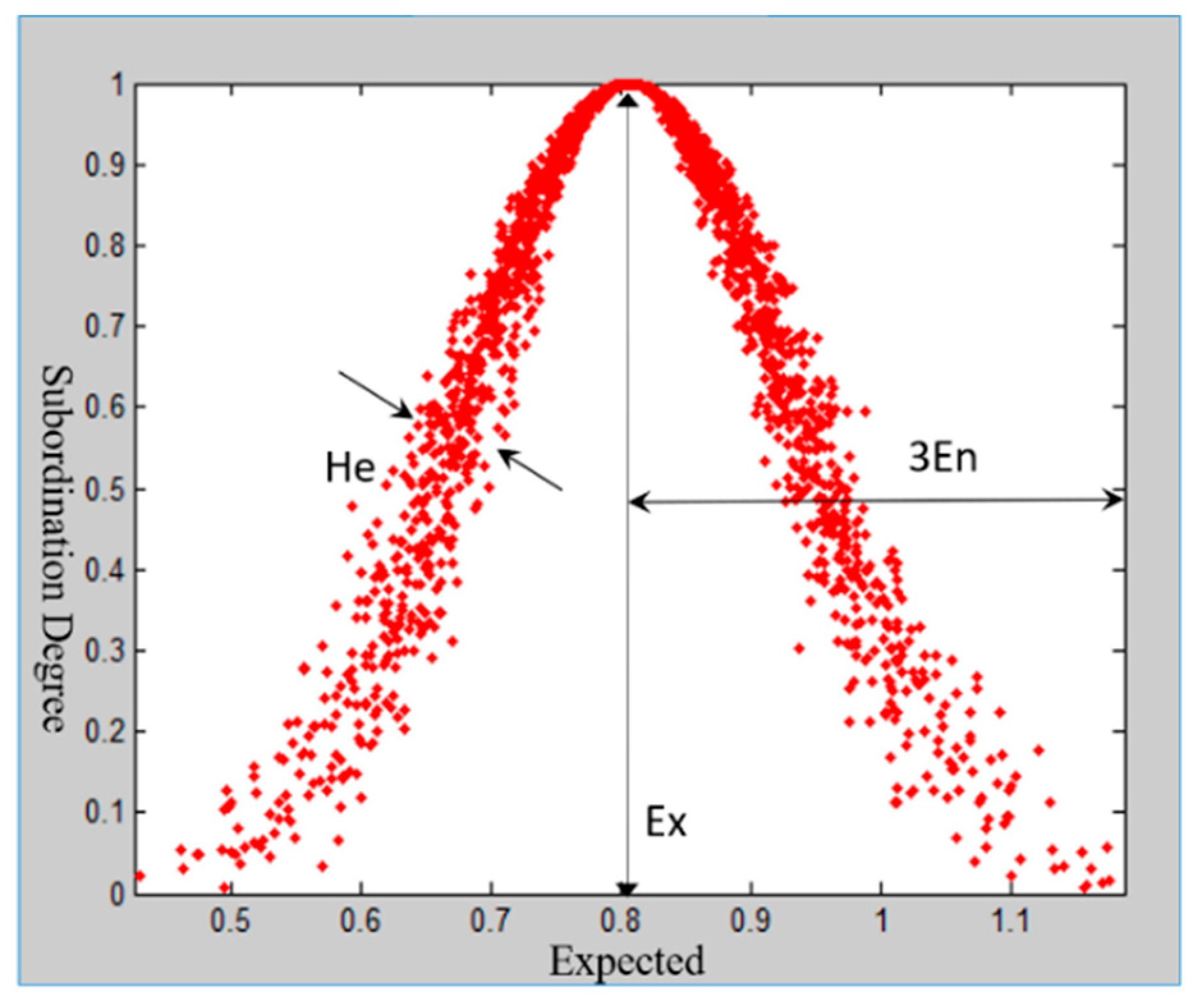
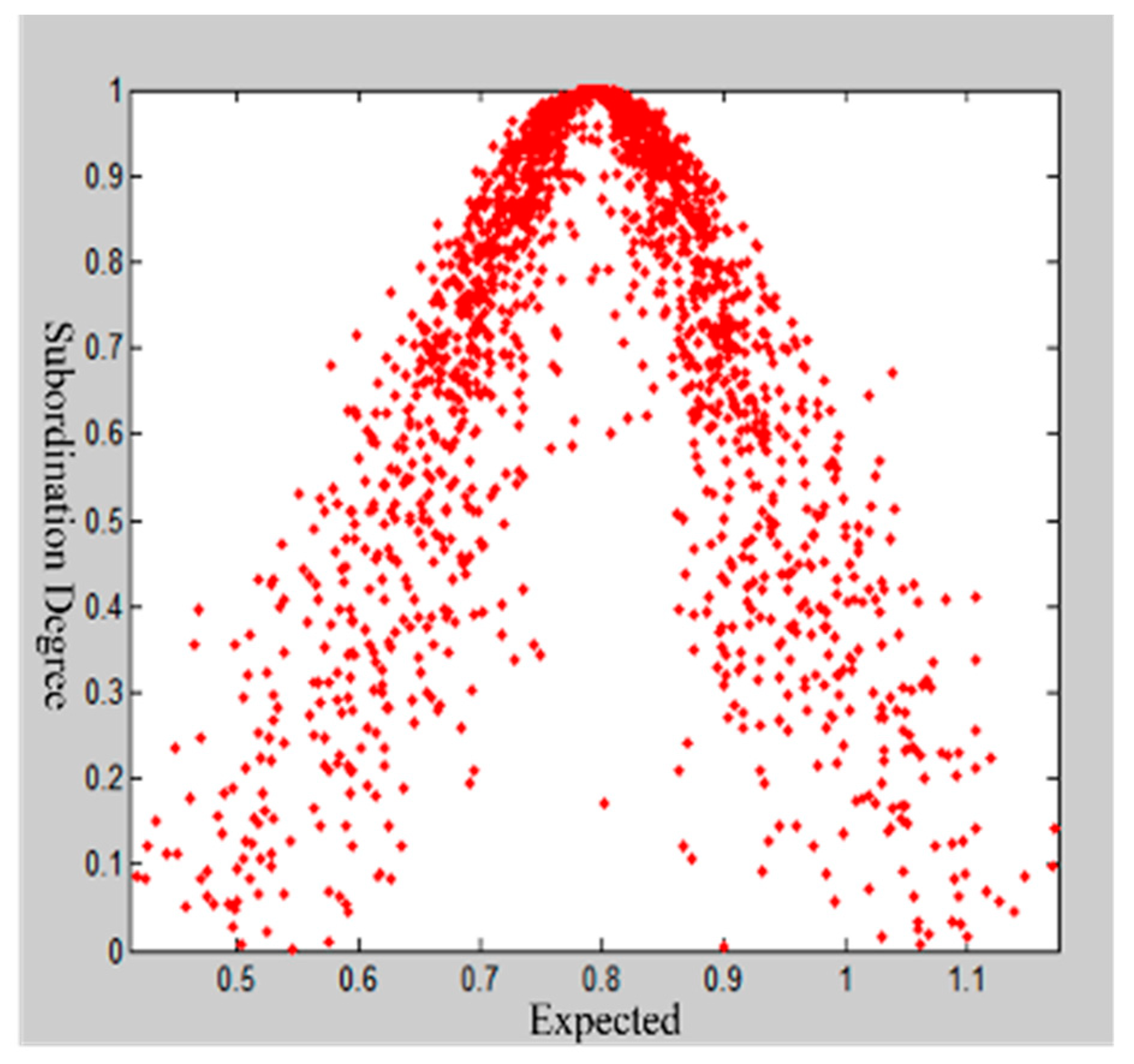
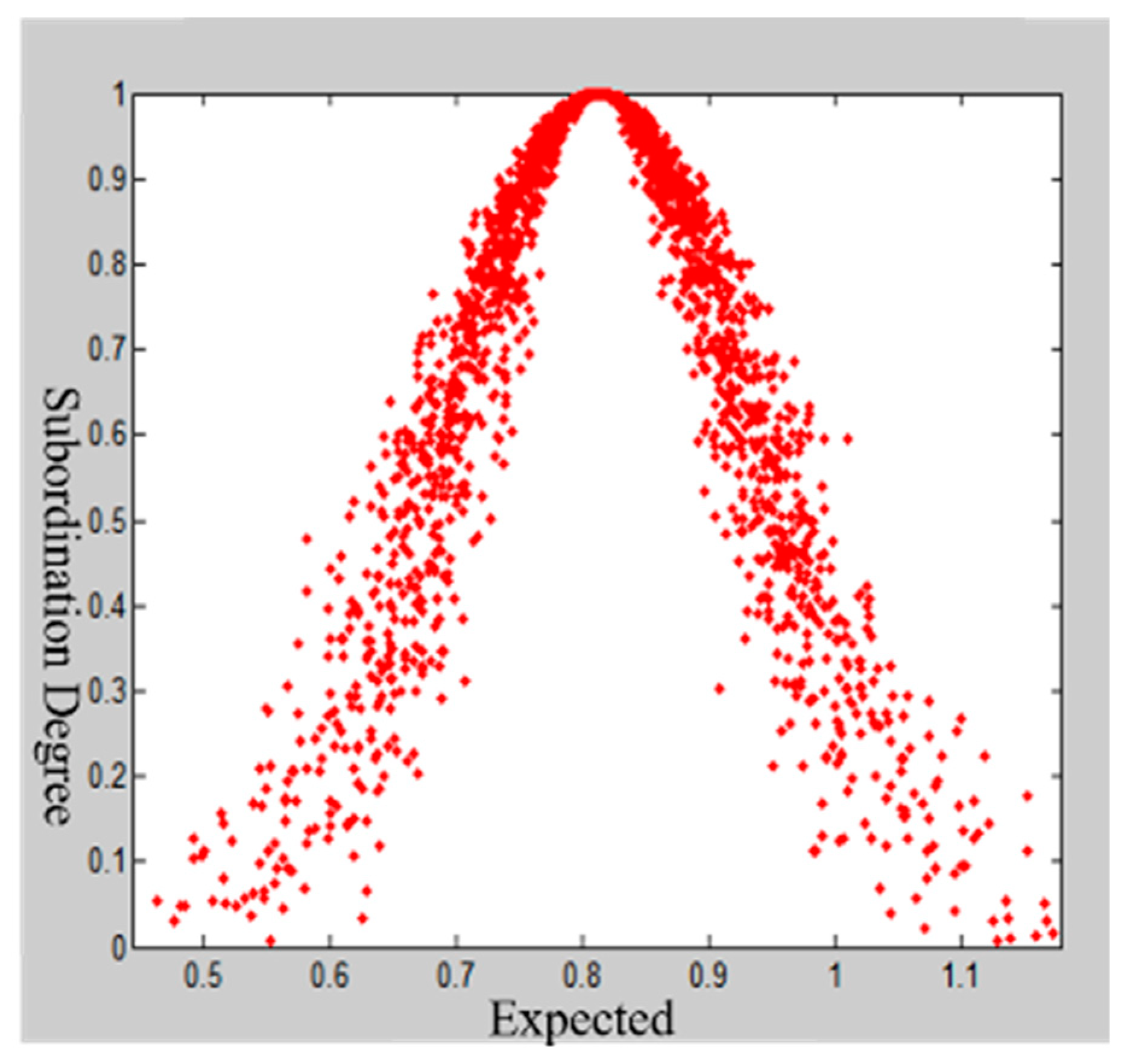
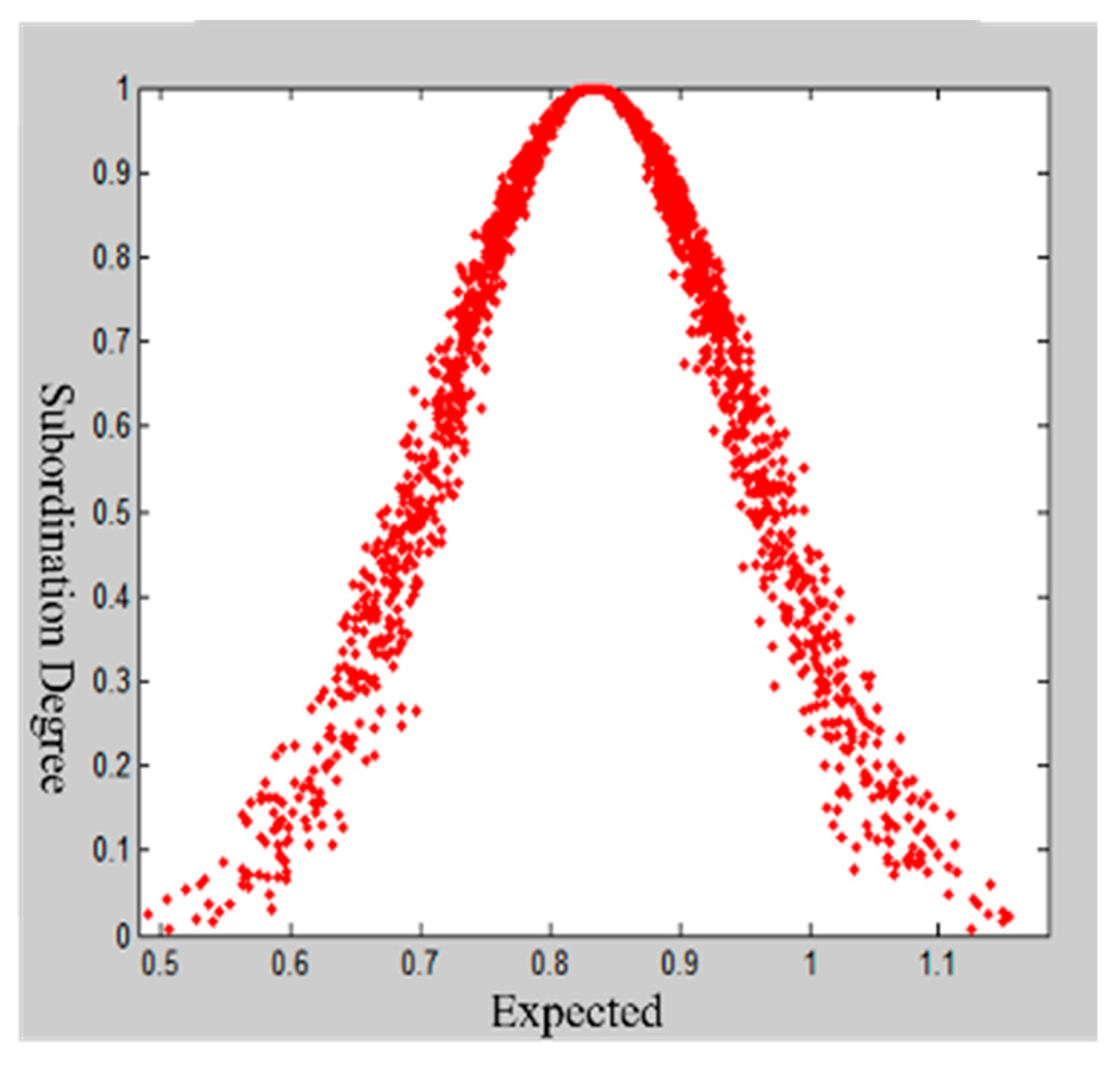
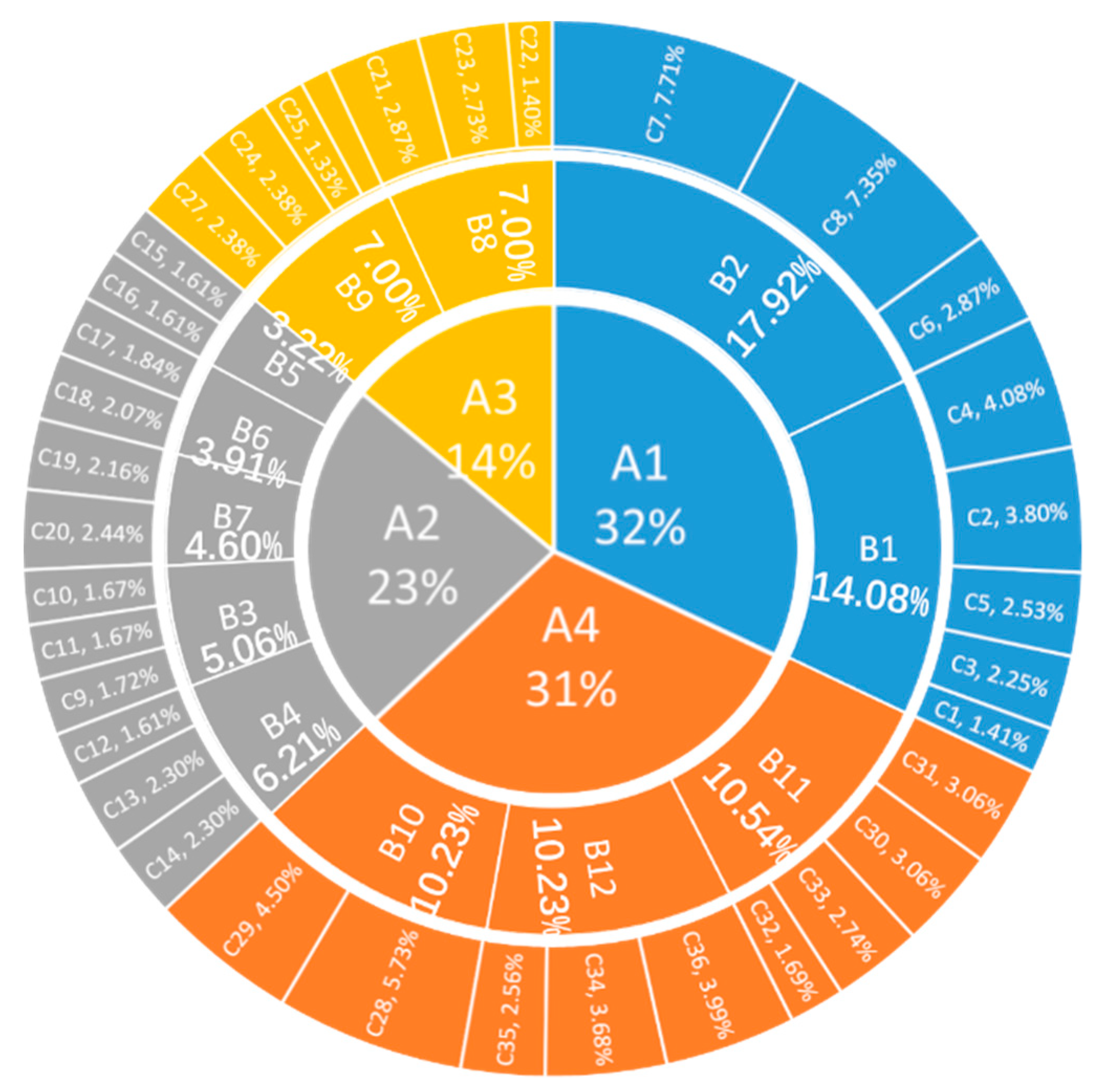
| Classification | Name |
|---|---|
| Categories of laws, regulations and conventions | Law of the China on Response to Emergencies [16] National Emergency Response Plan for Public Emergencies [17] Opinions of the State Council of the Central Committee of the Communist Party of China on Promoting the Reform of the System and Mechanism of Disaster Prevention, Mitigation and Relief [18] Regulations on Emergency Response to Production Safety Accidents [19] Hyogo Framework for Action 2005–2015 [20] Sendai Disaster Risk Reduction Framework 2015–2030 [21] |
| Indicator System Category | Indicator System Category: Manual of Strategic Performance Indicators for China’s Urban Development [22] Outline of Science and Technology for China’s Sustainable Development [18] Rockefeller Foundation Toughness City Index Research [8] UN-Habitat Urban Prosperity Index [23] |
| Documentation | The World Cities Report 2016 [23] Modern City Safety Space Construction Theory [15] |
| First-Level Indicators | Secondary Indicators | Tertiary Indicators | |||||||||
|---|---|---|---|---|---|---|---|---|---|---|---|
| Predisaster Prevention () | 0.8333 | 0.1170 | 0.0112 | government supervision and prevention () | 0.5867 | 0.1682 | 0.0091 | the city safety supervision department () | 0.2800 | 0.1604 | 0.0163 |
| the active cooperation of different departments () | 0.7933 | 0.1615 | 0.0169 | ||||||||
| the city safety management laws and regulations () | 0.4667 | 0.1393 | 0.0115 | ||||||||
| risk assessment measures () | 0.8467 | 0.1125 | 0.0024 | ||||||||
| a risk reduction plan () | 0.5467 | 0.1047 | 0.0165 | ||||||||
| grassroots city safety prevention () | 0.7467 | 0.1883 | 0.0087 | emergency prevention regulations () | 0.3067 | 0.1270 | 0.0159 | ||||
| the propaganda of emergency prevention () | 0.8200 | 0.1404 | 0.0141 | ||||||||
| the categories and quantities of safety equipment and facilities () | 0.7933 | 0.1615 | 0.0169 | ||||||||
| Disaster-bearing Carrier () | 0.6097 | 0.1092 | 0.0132 | Infrastructure () | 0.7467 | 0.2061 | 0.0138 | the flood control and drainage system () | 0.8400 | 0.0969 | 0.0179 |
| the road traffic volume and accessibility () | 0.7867 | 0.1225 | 0.0225 | ||||||||
| the lifeline resilience () | 0.7867 | 0.1225 | 0.0225 | ||||||||
| city safety facilities () | 0.9067 | 0.0780 | 0.0173 | the number of hospitals () | 0.5667 | 0.1337 | 0.0149 | ||||
| fire protection coverage () | 0.7667 | 0.1170 | 0.0112 | ||||||||
| the number of city shelters () | 0.7667 | 0.1393 | 0.0115 | ||||||||
| housing buildings () | 0.4733 | 0.1526 | 0.0151 | the number of anti-seismic buildings () | 0.3200 | 0.1471 | 0.0094 | ||||
| the number of old residential areas () | 0.3200 | 0.1136 | 0.0125 | ||||||||
| the population cluster statistics (), | 0.5600 | 0.1838 | 0.0145 | the population cluster locations () | 0.7533 | 0.1047 | 0.0165 | ||||
| the population density () | 0.8333 | 0.1393 | 0.0115 | ||||||||
| crowd safety protection measures () | 0.6867 | 0.1384 | 0.0145 | the crowd evacuation guidelines () | 0.6867 | 0.1348 | 0.0145 | ||||
| the crowd safety facilities () | 0.7733 | 0.1615 | 0.0169 | ||||||||
| Emergencies () | 0.3667 | 0.1170 | 0.0112 | natural disasters () | 0.5867 | 0.1181 | 0.0122 | the frequency of natural disasters in city areas () | 0.8333 | 0.1393 | 0.0165 |
| property losses Caused by Natural Disasters in Cities Every Year () | 0.4133 | 0.1225 | 0.0225 | ||||||||
| casualties Caused by Natural Disasters in Cities Every Year () | 0.8067 | 0.1426 | 0.0182 | ||||||||
| production accidents () | 0.5933 | 0.1462 | 0.0182 | the frequency of production accidents () | 0.7667 | 0.1393 | 0.0115 | ||||
| the mortality rate per 100,000 people as a result of production accidents (), | 0.4267 | 0.1526 | 0.0151 | ||||||||
| the accident GDP per 100 million yuan based on the mortality rate () | 0.3067 | 0.1615 | 0.0169 | ||||||||
| production accident economic losses () | 0.7800 | 0.1303 | 0.0209 | ||||||||
| Emergency Management () | 0.8200 | 0.1738 | 0.0090 | the emergency plan () | 0.8400 | 0.1103 | 0.0202 | the city emergency plan () | 0.7867 | 0.1393 | 0.0201 |
| the city emergency related laws and regulations () | 0.6075 | 0.1067 | 0.0027 | ||||||||
| the emergency management mechanism () | 0.8800 | 0.1003 | 0.0153 | the decision-making and disposal mechanism () | 0.8267 | 0.1025 | 0.0127 | ||||
| the information reporting mechanism () | 0.8267 | 0.1025 | 0.0127 | ||||||||
| the emergency linkage mechanism () | 0.4667 | 0.1170 | 0.0112 | ||||||||
| the recovery and reconstruction mechanism () | 0.7333 | 0.1281 | 0.0159 | ||||||||
| emergency support () | 0.8333 | 0.1727 | 0.0337 | the number of city professional rescue workers () | 0.7667 | 0.1281 | 0.0159 | ||||
| the frequency of emergency drills () | 0.5333 | 0.1170 | 0.0112 | ||||||||
| the city rescue material reserves () | 0.8200 | 0.1136 | 0.0152 |
| Total Score of Index System Evaluation | City Safety Resilience Level |
|---|---|
| 0 ≤ R < 60 | Unqualified |
| 60 ≤ R < 70 | Very poor |
| 70 ≤ R < 80 | General, |
| 80 ≤ R < 90 | Good |
| 90 ≤ R < 100 | Excellent |
© 2019 by the authors. Licensee MDPI, Basel, Switzerland. This article is an open access article distributed under the terms and conditions of the Creative Commons Attribution (CC BY) license (http://creativecommons.org/licenses/by/4.0/).
Share and Cite
Pei, J.; Liu, W.; Han, L. Research on Evaluation Index System of Chinese City Safety Resilience Based on Delphi Method and Cloud Model. Int. J. Environ. Res. Public Health 2019, 16, 3802. https://doi.org/10.3390/ijerph16203802
Pei J, Liu W, Han L. Research on Evaluation Index System of Chinese City Safety Resilience Based on Delphi Method and Cloud Model. International Journal of Environmental Research and Public Health. 2019; 16(20):3802. https://doi.org/10.3390/ijerph16203802
Chicago/Turabian StylePei, Jingjing, Wen Liu, and Lu Han. 2019. "Research on Evaluation Index System of Chinese City Safety Resilience Based on Delphi Method and Cloud Model" International Journal of Environmental Research and Public Health 16, no. 20: 3802. https://doi.org/10.3390/ijerph16203802
APA StylePei, J., Liu, W., & Han, L. (2019). Research on Evaluation Index System of Chinese City Safety Resilience Based on Delphi Method and Cloud Model. International Journal of Environmental Research and Public Health, 16(20), 3802. https://doi.org/10.3390/ijerph16203802




